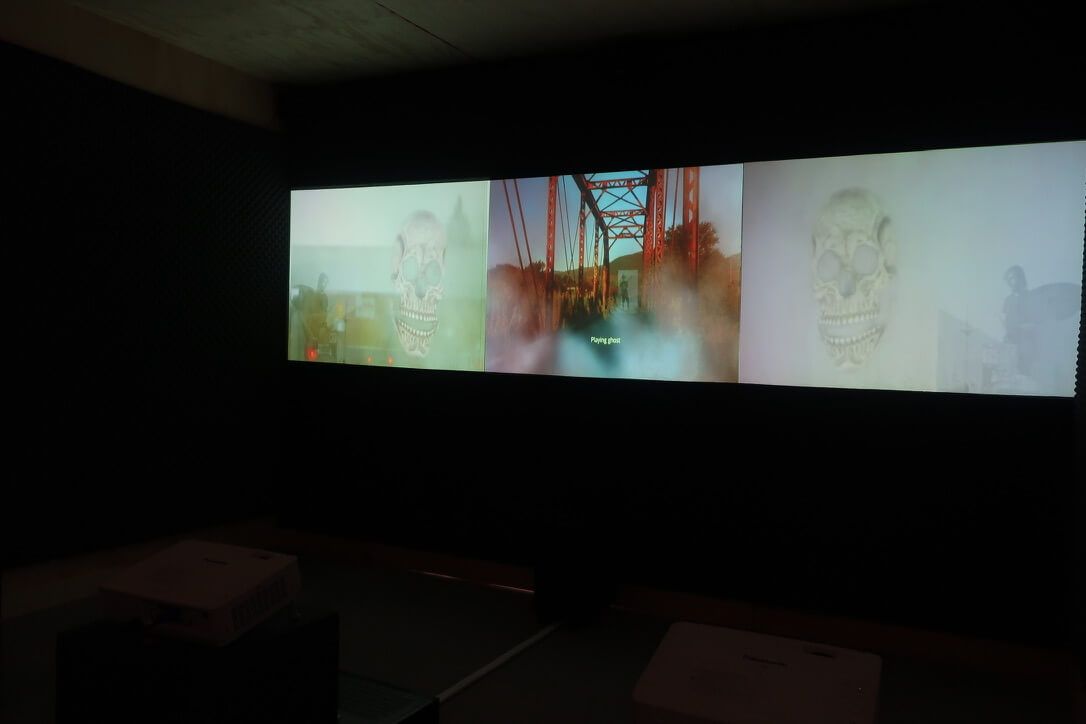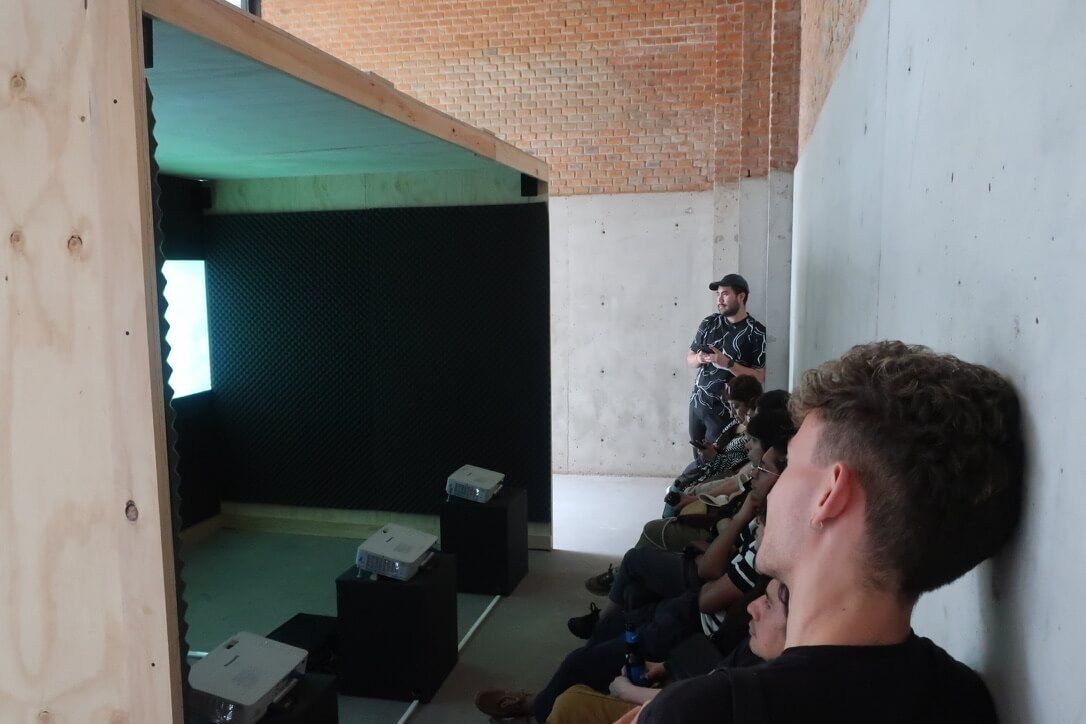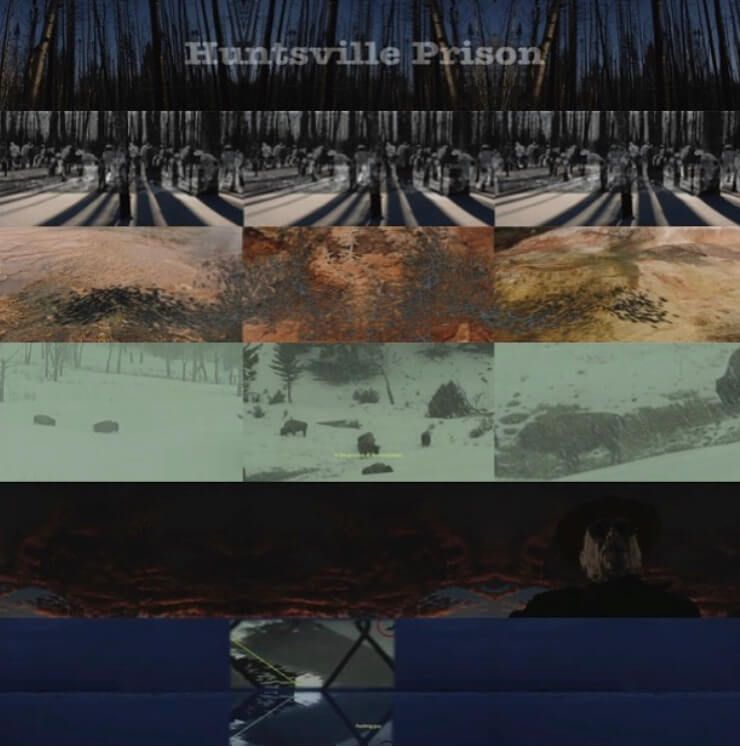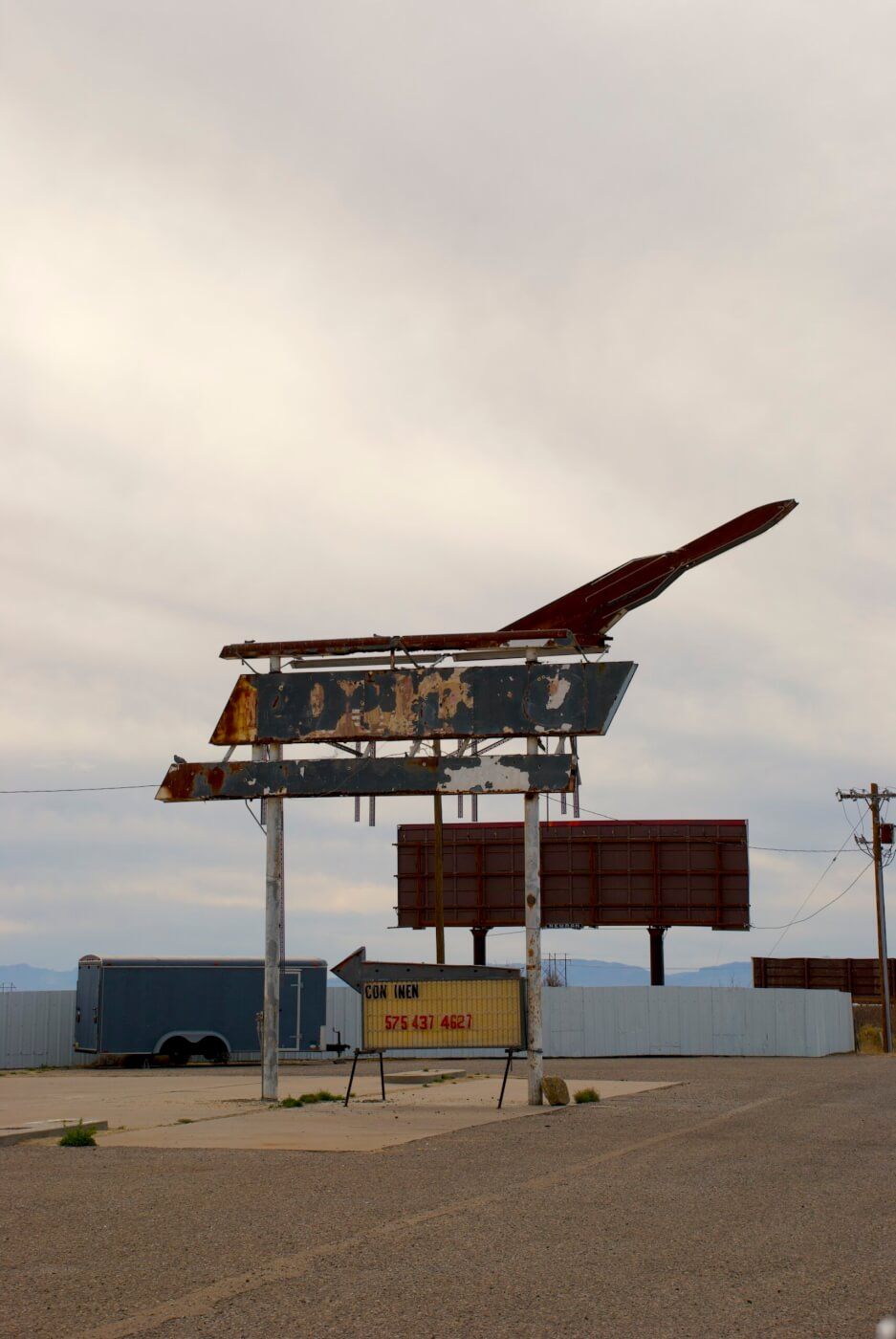Murder on the Black Bridge (2013 – 22)
Edgardo Aragón
August 19 – October 29, 2023
Casa Wabi Sabino
The work of Edgardo Aragón (Oaxaca, 1985) unfolds through a constant exploration of cultural identity, memory, and the interaction between personal and collective stories in our country. Often confrontational or controversial, his drawings, videos, installations, and sound pieces invite questioning and reflection on social conflicts related to landscape, forced migration, racism, or drug trafficking, among others.
“Murder on the Black Bridge” (2013-2022) is a three-channel video installation presenting a historical perspective on migratory phenomena—human and animal—between southern Canada and northern Mexico. The narrative structure is built like an American western that equates the bison’s journey across North America with the historic mass displacement of people in the same territories.
From the conquest of sacred lands and massive killings of indigenous peoples in the central and western United States to fleeing due to conflicts, persecutions, or the search for a better quality of life, migration has woven a complex web of stories and human experiences during the 19th century and up to our present day. Aragón unravels some of these narratives, exploring and questioning the cultural, political, and emotional interactions that occur in the region.
The occupant knows that this land is not his.
The visual and aesthetic references that the artist uses are as diverse as they are profound. From the use of documentaries taken from National Geographic where we observe bison in different ecosystems to excerpts from Western films like John Wayne’s “Rio Bravo” or B-movie horror series like “A Nightmare on Elm Street,” which compare their protagonists to American anti-heroes—generals of the conquering American army—these are interwoven with references to different geographic points of historical, social, and political relevance. While the trigger for the narrative is the shooting of a migrant by a border police officer in Ciudad Juárez/El Paso, particular attention is paid to events such as the war between Mexico and the United States or the detonation of Trinity, the first atomic bomb in the desert of New Mexico. Similarly, musical and literary references serve as the narrative thread, blending texts from Native American wisdom with publications like Joseph Campbell’s “The Masks of God,” Geronimo’s “My Life,” Paco Ignacio Taibo II’s “El Álamo,” or songs from albums like “Uniendo Fronteras” and “La Jaula de Oro” by Los Tigres del Norte. As an epilogue, Aragón presents, for the first time, a corrido of his own composition—”Corrido del Río Grande”—performed by the group La Recia del Sur.
Aragón’s profound visual poetry invites us to reflect on how the landscape and imposed geographies have shaped individual and collective identities, sparking new conversations between tradition and the landscape.
Curator: Alberto Ríos de la Rosa
Project sponsored by the Support System for Creation and Cultural Projects of the Ministry of Culture.
We would like to thank Amanda de la Garza, Cuauhtémoc Medina, Joel Ortega, and Salvador Ávila from MUAC, as well as Mauricio Galguera for their generous support in making this exhibition possible.
“Murder on the Black Bridge” (2013-2022) is a three-channel video installation presenting a historical perspective on migratory phenomena—human and animal—between southern Canada and northern Mexico. The narrative structure is built like an American western that equates the bison’s journey across North America with the historic mass displacement of people in the same territories.
From the conquest of sacred lands and massive killings of indigenous peoples in the central and western United States to fleeing due to conflicts, persecutions, or the search for a better quality of life, migration has woven a complex web of stories and human experiences during the 19th century and up to our present day. Aragón unravels some of these narratives, exploring and questioning the cultural, political, and emotional interactions that occur in the region.
The occupant knows that this land is not his.
The visual and aesthetic references that the artist uses are as diverse as they are profound. From the use of documentaries taken from National Geographic where we observe bison in different ecosystems to excerpts from Western films like John Wayne’s “Rio Bravo” or B-movie horror series like “A Nightmare on Elm Street,” which compare their protagonists to American anti-heroes—generals of the conquering American army—these are interwoven with references to different geographic points of historical, social, and political relevance. While the trigger for the narrative is the shooting of a migrant by a border police officer in Ciudad Juárez/El Paso, particular attention is paid to events such as the war between Mexico and the United States or the detonation of Trinity, the first atomic bomb in the desert of New Mexico. Similarly, musical and literary references serve as the narrative thread, blending texts from Native American wisdom with publications like Joseph Campbell’s “The Masks of God,” Geronimo’s “My Life,” Paco Ignacio Taibo II’s “El Álamo,” or songs from albums like “Uniendo Fronteras” and “La Jaula de Oro” by Los Tigres del Norte. As an epilogue, Aragón presents, for the first time, a corrido of his own composition—”Corrido del Río Grande”—performed by the group La Recia del Sur.
Aragón’s profound visual poetry invites us to reflect on how the landscape and imposed geographies have shaped individual and collective identities, sparking new conversations between tradition and the landscape.
Curator: Alberto Ríos de la Rosa
Project sponsored by the Support System for Creation and Cultural Projects of the Ministry of Culture.
We would like to thank Amanda de la Garza, Cuauhtémoc Medina, Joel Ortega, and Salvador Ávila from MUAC, as well as Mauricio Galguera for their generous support in making this exhibition possible.








